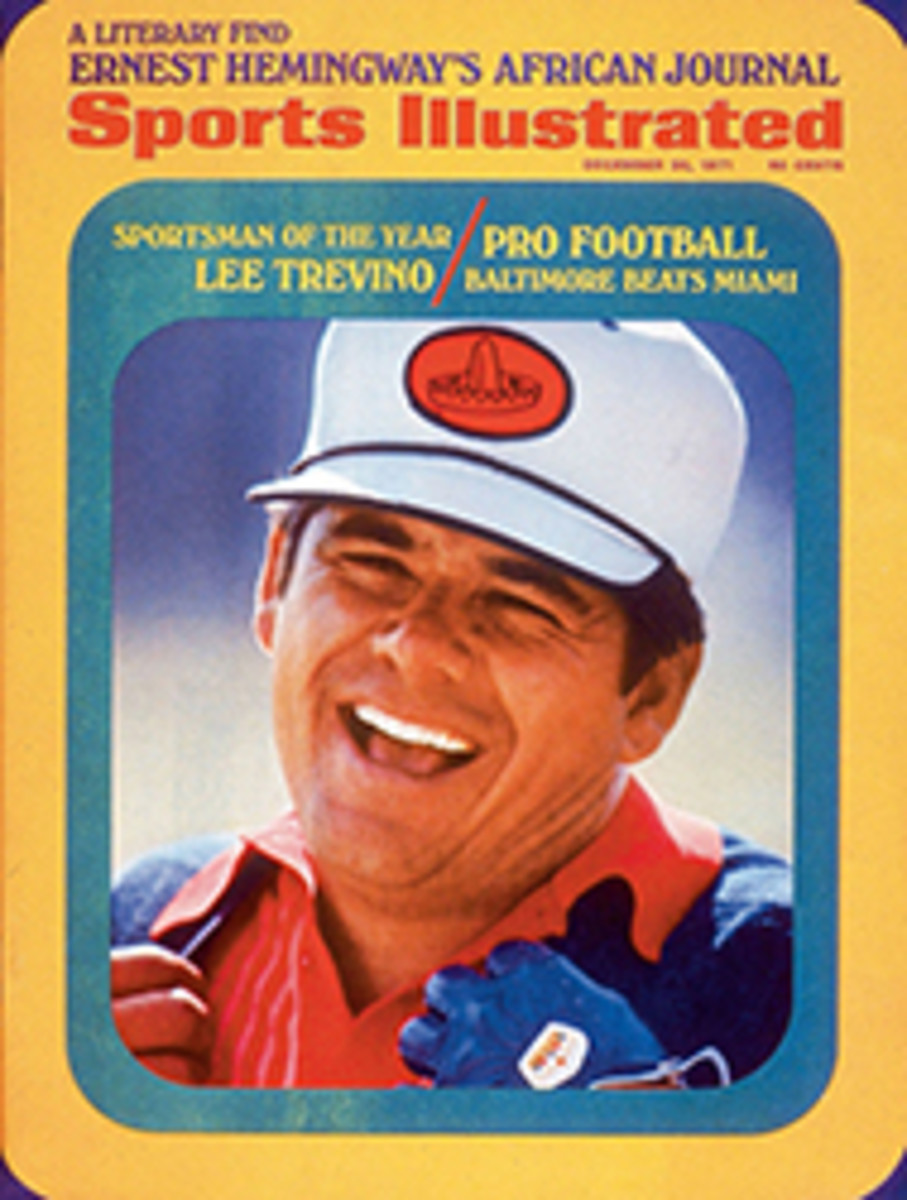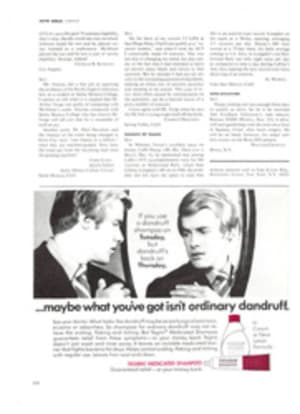
The Kick Football Dropped
When they started streamlining the football in 1912, they put the forward pass in business, but in the process they killed off an honored and exciting maneuver, the dropkick. Once the ball had lost its blimpy, pug-nosed contour, the dropkick was too difficult to execute, and gradually became a forgotten weapon. The loss seems insignificant when weighed against the offensive innovations the sleeker football permitted, but the dropkick experts of football's hamburger days were pivotal in the arsenals of several teams, and their heroics were often colorful.
An entire generation has grown up since the last game was won or lost by means of a dropkicked field goal or extra point, and many fans probably have never seen such a kick executed, even in practice. The kicker held the ball about the way a punter does today, but with the front end slightly more downward. In dropping it he let the nose fall at a fairly steep angle, bringing his leg back and then forward to meet the ball just after it hit the ground. Kicked properly, the ball then took off much as a placekick.
Since field goals were once worth more points than touchdowns (five points until 1904), the ability to kick was more important in football offenses of that era. It was legal, for a time, to kick a field goal on plays like punt returns. This meant kicking the ball on the run, of course, giving some clue to why the dropkick was preferred over the placement.
The 1899 Wisconsin-Minnesota game was broken open by just such a maneuver. During a scoreless ball game, the Gophers punted to Wisconsin's Pat O'Dea. When he saw Minnesota's Gil Dobie coming up for a tackle, reported one Minnesota football historian, "Pat threw the ball down and slightly to his right; and as it rose from the ground caught it with his right toe and sent it sailing for the goal. The ball rose, drove to the left and passed between the goalposts as true as a die." Even so, it was not O'Dea's best effort. In 1898 he kicked one for 62 yards against Northwestern.
O'Dea had plenty of long-range company. Jim Thorpe used to dropkick 50-yarders from all angles during practices at Carlisle. "It was just for something to do," he told Coach Pop Warner. George Capron of Minnesota took his kicks more seriously. The Gophers scored only 55 points in 1907, and Capron accounted for 44 of them with dropkicked field goals at four points each.
Through the 1920s the dropkick remained a scoring device, though an increasingly rare one. As the ball got more elliptical, kickers began having trouble bouncing it properly. The running dropkick became almost impossible. Then came the rule change, and once the kicker was forced to remain stationary there seemed no reason not to have the ball held by another player. Gradually, the placekick took over. Still, a few practitioners survived through the 1930s. Albie Booth won a couple of games for Yale (against Princeton 10-7 in 1930 and Harvard 3-0 in '31) with dropkicks. As late as 1939 Nile Kinnick, the star of Iowa's Iron Men, began dropkicking because, said one Iowa football authority, "He just enjoyed it more."
And then there was Bill Garnaas of Minnesota. It is impossible to absolutely confirm the fact, since the NCAA does not keep this kind of record, but there is every indication that Garnaas was the last dropkicker to win a football game with his toe. This happened in 1942 against Michigan on what amounted to a busted play, and it was one of the least artistic dropkicks in history.
Kicking was one of Bill Garnaas' passions. It did not matter whether it was a dropkick, punt or placement; he loved getting his foot into the ball. The open spaces around his boyhood home gave him aple scope to pursue his mania. When he enrolled at the University of Minnesota, he was put right to work. The Gophers were at the end of their prewar domination of the Big Ten, having had their string of 18 straight victories broken by Iowa Navy Preflight three weeks before the Michigan game. A contributing factor in the loss was Garnaas' absence with an injured knee. By the Michigan game, however, he was back in shape, apparently kicking as well as ever. One story said he placekicked 90 straight points-after in his first postinjury drill, and his punts were spiraling 50 yards.
Both Michigan and Minnesota were in Big Ten contention at that time, with the Little Brown Jug an added inducement. Minnesota had held the Jug since 1934, lending a certain intensity to the Wolverine cause. The game turned out as close as predicted. It was 7-7 late in the first half when Minnesota took over at midfield. The Gophers drove to the three-yard line, but now the clock had run down to a few seconds and Minnesota had used its time-outs. In the final huddle, Garnaas yelled, "Field goal on the count of three." He meant a placekick, of course.
Minnesota lined up, Herm Frickey kneeling to hold the ball for Garnaas. Suddenly, Garnaas looked up and saw how little time was left. Frickey panicked, jumping to his feet and yelling, "Dropkick it, Bill, there isn't time!" Once the ball was snapped, the play—placement or dropkick—would be allowed to finish in any case, but everyone seems to have forgotten this fact. The ball was snapped to Garnaas on the 11-yard line. As he stepped forward to kick, the gun went off. Garnaas let go with the first dropkick he had ever tried in competition.
His timing was bad. The ball hit the ground, but instead of his foot meeting it smartly at that instant, Garnaas allowed the ball to bounce up an inch or two. Now his instep, not his toe, made contact. The ball took off in a vertical spiral and wavered through the air toward the goalposts. "The gun going off didn't help my timing any," Garnaas protested later. "I also made the mistake of looking up and not following through."
No matter. The ball slithered just inside the left upright and died as it cleared the crossbar. Another inch to the left or another inch lower and it would never have made it. Minnesota went on to win the game 16-14, making the Garnaas boot an historic event, rather than a forgotten novelty. With that, the dropkick died forever.

